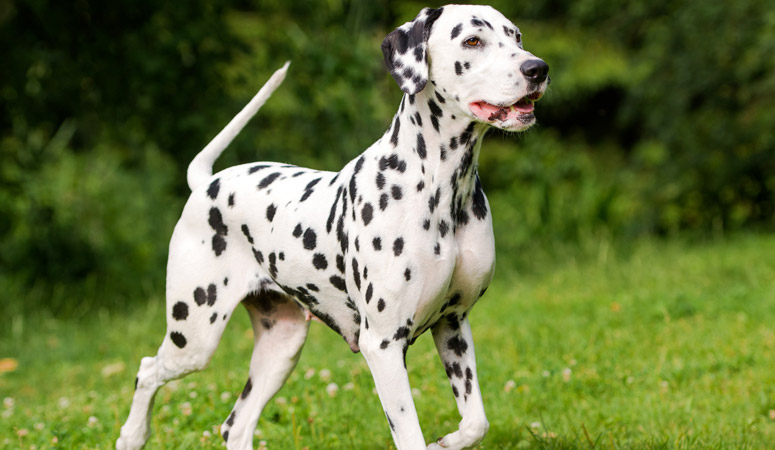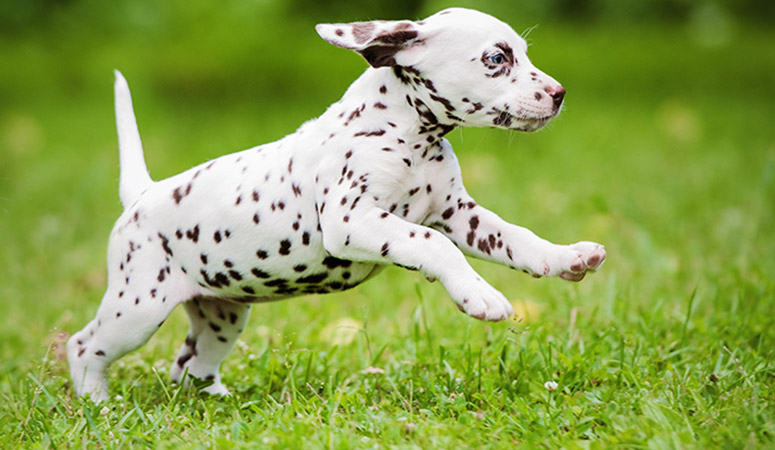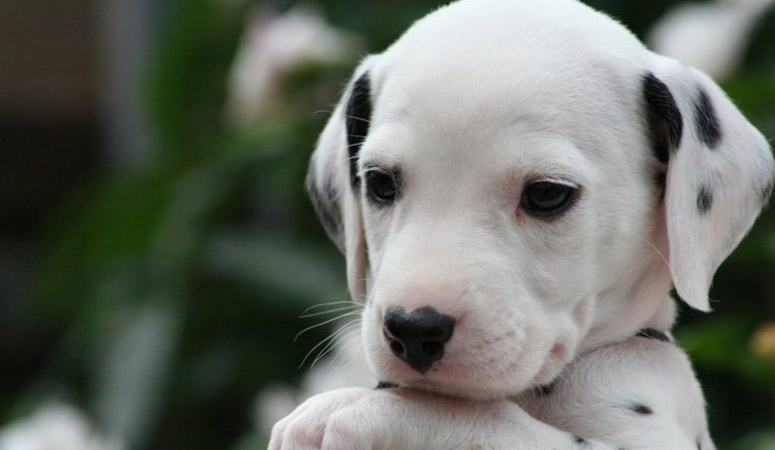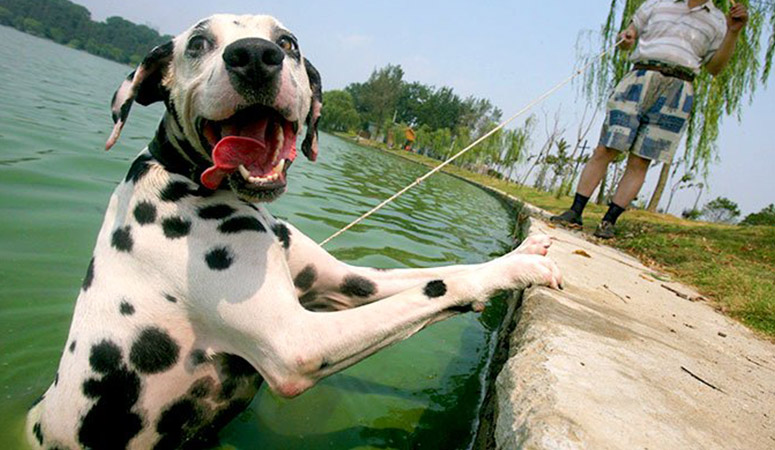Dalmatian
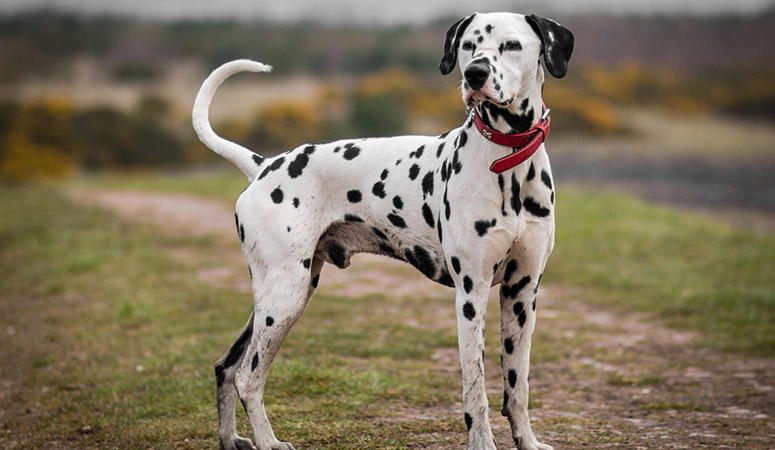
The Dalmatian is famous for its unique spotted coat, this dog breed has a history that could go back several hundred years. As highly active and intelligent, Dalmatians can be trained to be a coach dog and other positions, such as firehouse dogs, hunters, and circus performers. Now, they become a popular family pet.
| Other Names | Dal, Dalmata, Dalmatinac, Dalmatiner, Dalmatinski Pas |
| Color | White & Black, White & Liver Brown |
| Height | Males: 22-24 inches. Females: 19-23 inches. |
| Weight | Males: 59-71 pounds. Females: 53-64 pounds. |
| Life Span | 11-13 years |
| Personality | Dignified, Smart, Outgoing |
| Exercise | Energetic |
| Origin |
| Popularity | #59 |
| Groom Needs | Weekly |
| Kids Friendly | Yes with supervision |
| Dog Friendly | Yes with supervision |
| Watch Dog | |
| Family Dog | |
| Litter Size | 6-12 |
Dalmatian Pictures
Dalmatian Video
Introduction
The Dalmatians which are today popular family pets and companions were once reputed as carriage dogs, tagging beside the coaches of noble people and were hardly a property of common people. They were also once prized by firefighters. The Dalmatian has a short and smooth coat that is darkly spotted. The spots are mostly black or liver in color. The Dalmatian is born with a plain white coat, after which spots begin to appear within the first ten days.
They are large-sized dogs with enough muscles to afford them a high level of endurance and incredible stamina. A mature Dalmatian stands anywhere from 18 to 25 inches height measured from paw to shoulder and weighs 45-70 pounds, with little variations between males and females. They are as reliable as watchdogs as they were wonderful coach dogs. They lead dignified and robust lives until about 11-13 years, around which most Dalmatians eventually die.
Living with Dalmatian
Dalmatian is a dog breed of little or no doggy odor, and their coat is dirt-repellent which is beautiful with its colored spots on sparkling white background, and the coat doesn’t need much work to keep it in good condition. Brushing two or three days a week, and a monthly bath is enough to keep their short, sleek coat clean and healthy.
The owners need to mention that Dalmatian shed year-round, even shed day and night, if you choose this breed, be prepared to live with dog hair.
Check your dog’s ears once a week and clean them with a dog-friendly, gentle cleanser. Brush their teeth at least two or three times a week to remove tartar buildup and the bacteria that lurk inside it, the daily brush is better to keep fresh breathe and prevent gum disease. Trim the nails as needed, usually every few weeks.
The Dalmatian is a high energy dog breed who needs regular exercise to keep fit and happy. They require at least one to two hours of vigorous exercise and play every day or even more if feasible. The exercise can be in the form of chasing a ball tossed across the backyard, taking a long hike through the woods, or running alongside a biking or jogging owner. If they don’t get adequate exercise, they may be destructive, and a few, mellow walks a day couldn’t do the trick. Owners shouldn’t neglect Dalmatian’s exercise requirements.
Dalmatians are capable of extra exercises that can be used in more advanced scenarios such as firefighting and in dog shows.
Generally, it is recommended to feed a Dalmatian with one and a half to two cups of high- quality dry dog food every day, divided into two meals. There should be clean fresh water at all times. More importantly, the food amount should vary depending on your dog’s weight, activity level and age.
Some dogs are easy to get overweight, so you need to watch their calorie consumption and weight level all the time. Treats may be an important aid in training, but excessive intake can lead to obesity. Also, owners need to distinguish which human food is safe for dogs and which are not. If you have any problems with your dog’s weight or diet, just consult from your veterinarian.
Dalmatians are prone to the following health conditions: Deafness, Urinary tract stones (Urolithiasis), Bladder stones, Hip dysplasia, Skin allergies, Iris sphincter dysplasia…
Major concerns: urinary stones, deafness
Minor concerns: iris sphincter dysplasia, hypothyroidism, allergies, seizures
Occasionally seen: CHD
Suggested tests:
BAER Testing
Hip Evaluation
Total Annual Cost: $2889
Cost is estimated for the first year and may vary depending on many factors, such as dog food, health care, leash, collar, licensing, possible fencing, crates, training and obedience classes, dog-walking, grooming, treats, toys, flea, tick, and heart-worm meds, microchips, etc.
Dalmatians may be very sensitive, so positive and reward-based training is a must for them from the beginning training. It is recommended to start early socialization and puppy training classes that can help Dalmatians grows into a well-adjusted, well-mannered companion. They are smart dogs who are both eager to please and headstrong. Exposing your Dalmatian to as many new and unusual but pleasant situations as possible as part of his training play a very important role. Also, Dalmatians need gentle but firm training so they could learn that the house rules are non-negotiable.
Dalmatians are eager to participate in agility training and most dog sports and love the activities that can let them show off their mental and physical agility.
History
The earliest documented evidence of the existence of the Dalmatian breed dates back to early18th century Croatia in the archives of the Archdiocese of Dakovo, where Bishop Petar Bakić described a dog he referred to as Canis Dalmaticus in the church chronicles. Again, the name was used by another bishop in 1739. According to the FCI, Dalmatians originates from Croatia, although some historians link them to an Egyptian ancestry. The history of this dog breed has been traced back to the 1600s in paintings and Frescos in ancient Croatia where they were called the Dalmatinski Pas.
Thomas Pennant, in 1771, described this dog breed as Dalmatians, claiming that the origin of this breed is Dalmatia. It was in 1790 that the Dalmatian was referred to as Coach Dog in Thomas Bewick’s General History of Quadrupeds. This was due to the tolerance of the Dalmatian to horses, and its spotted coat which endeared it to the upper class. So, in those days it wasn’t an uncommon sight to find a Dalmatian trotting beside a carriage or coach. There are reports that say that Dalmatians were even used as guard dogs over the horse stables at night.
It wasn’t until the breed was introduced to England in the 18th century that it began to develop progressively into what we know today as Dalmatians. The first standard for the breeding of Dalmatians was drafted in England by Vero Shaw in 1882, but it only became officially accepted in 1890 after the founding of the first breed club in England. In America, these dogs have come to be associated with water wagons and firefighting, even as mascots for firefighters.
Helpful Information
Breed Club: DALMATIAN CLUB OF AMERICA, INC.
Breed Club Link: http://www.thedca.org/
Breed Club Rescue: Dalmatian Club of America Rescue Education (DCARE)
Breed Club Rescue Link: http://www.thedca.org/rescue.html

